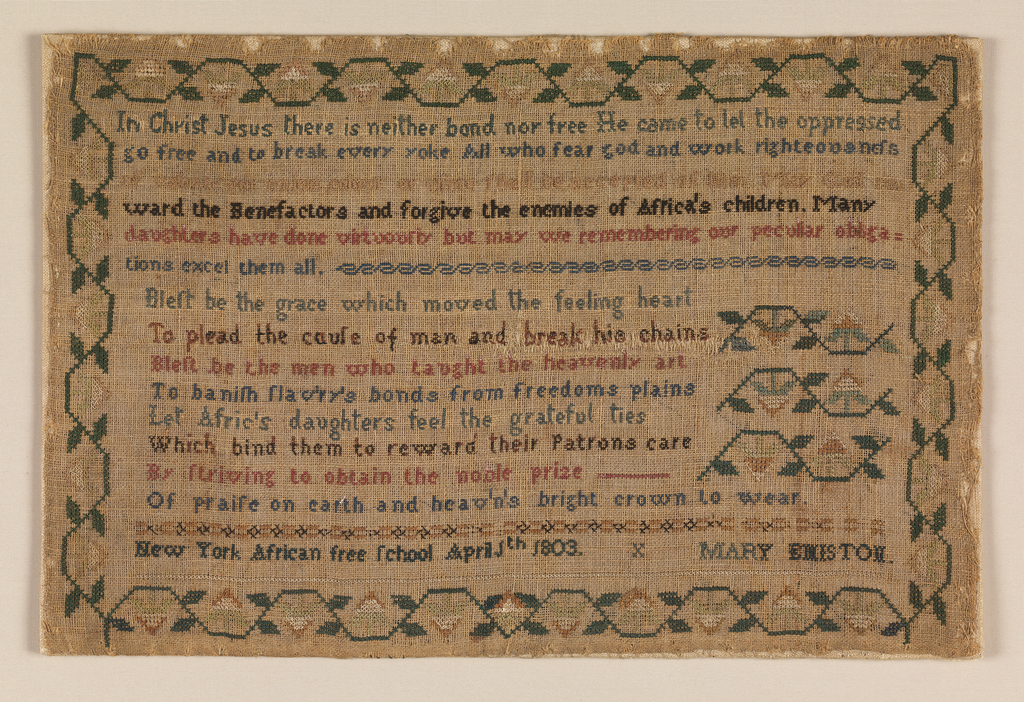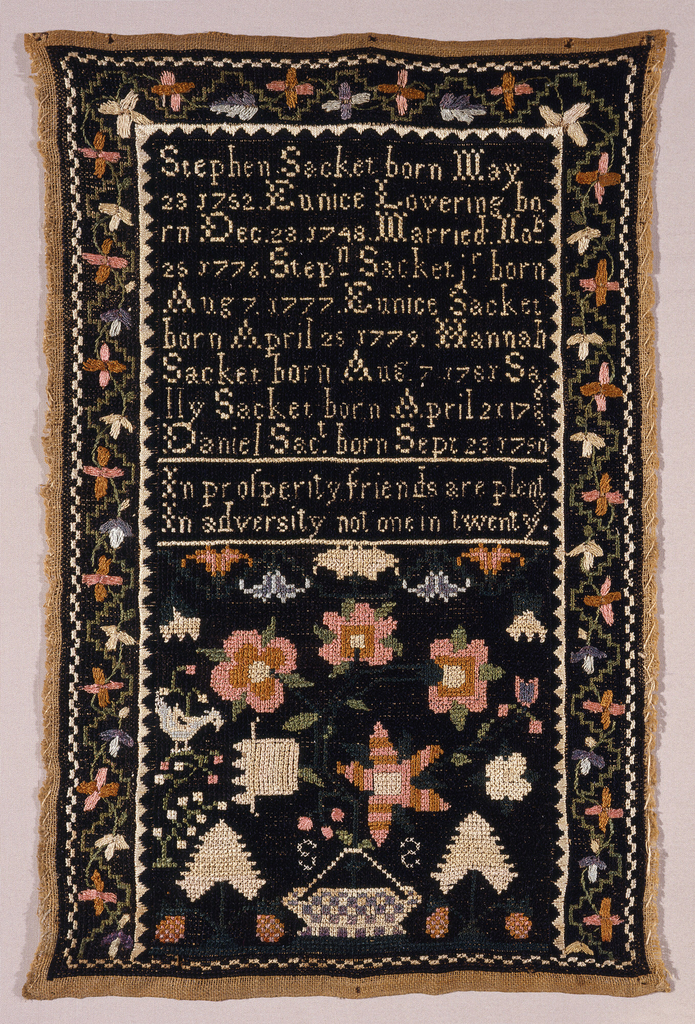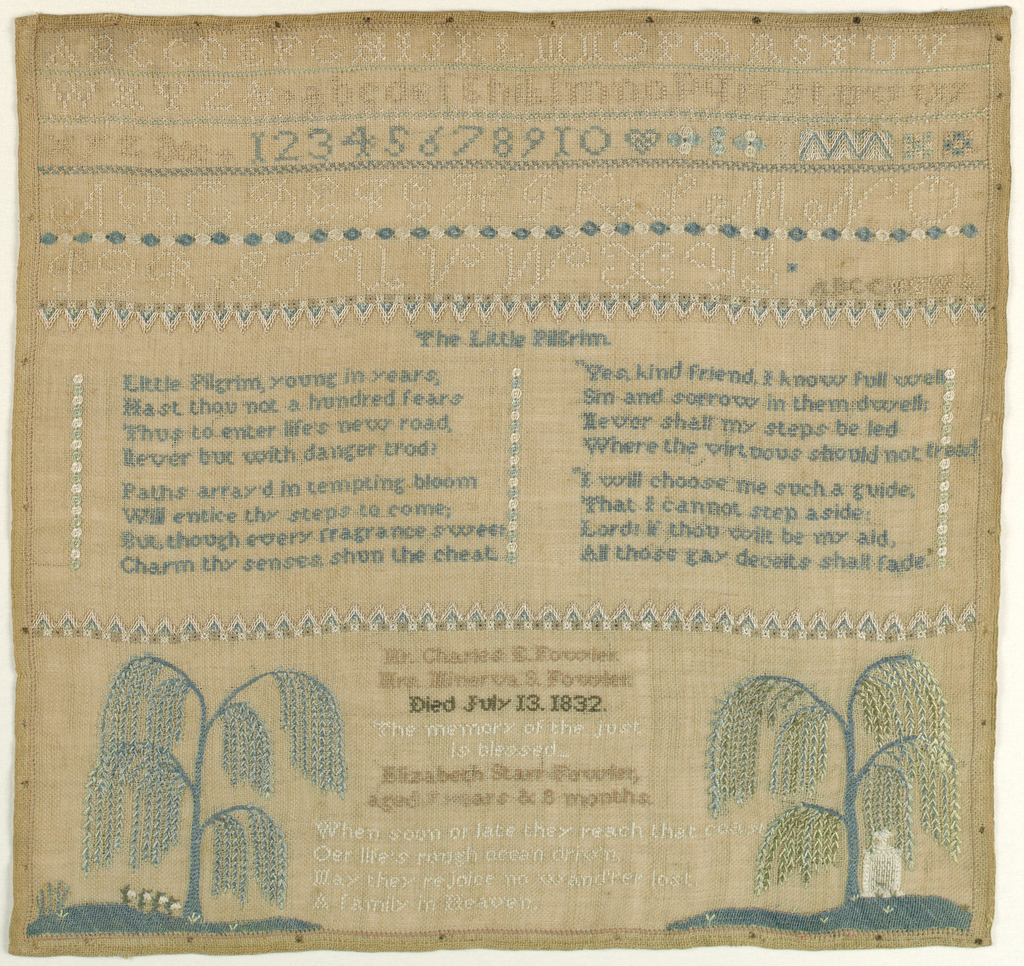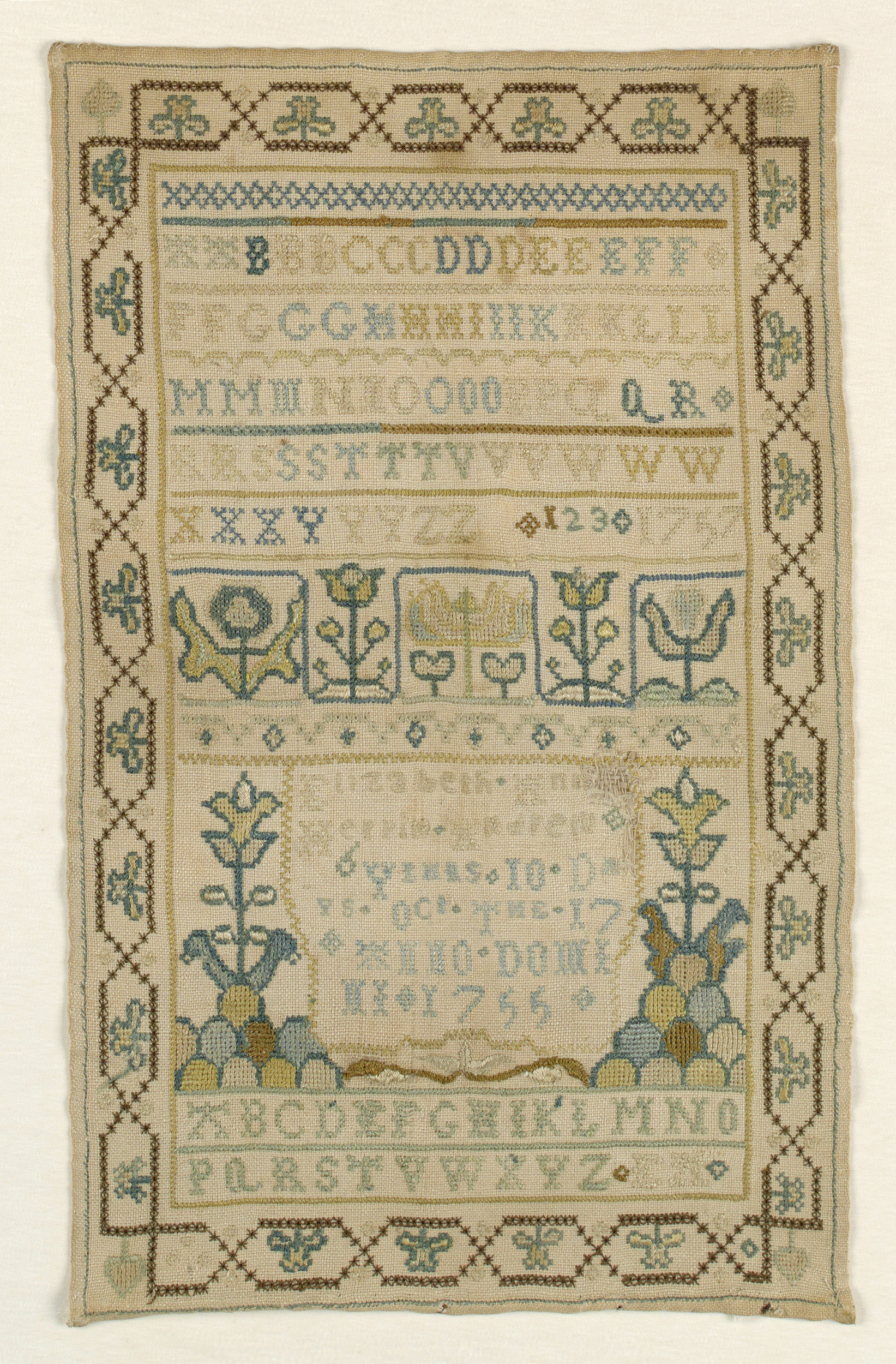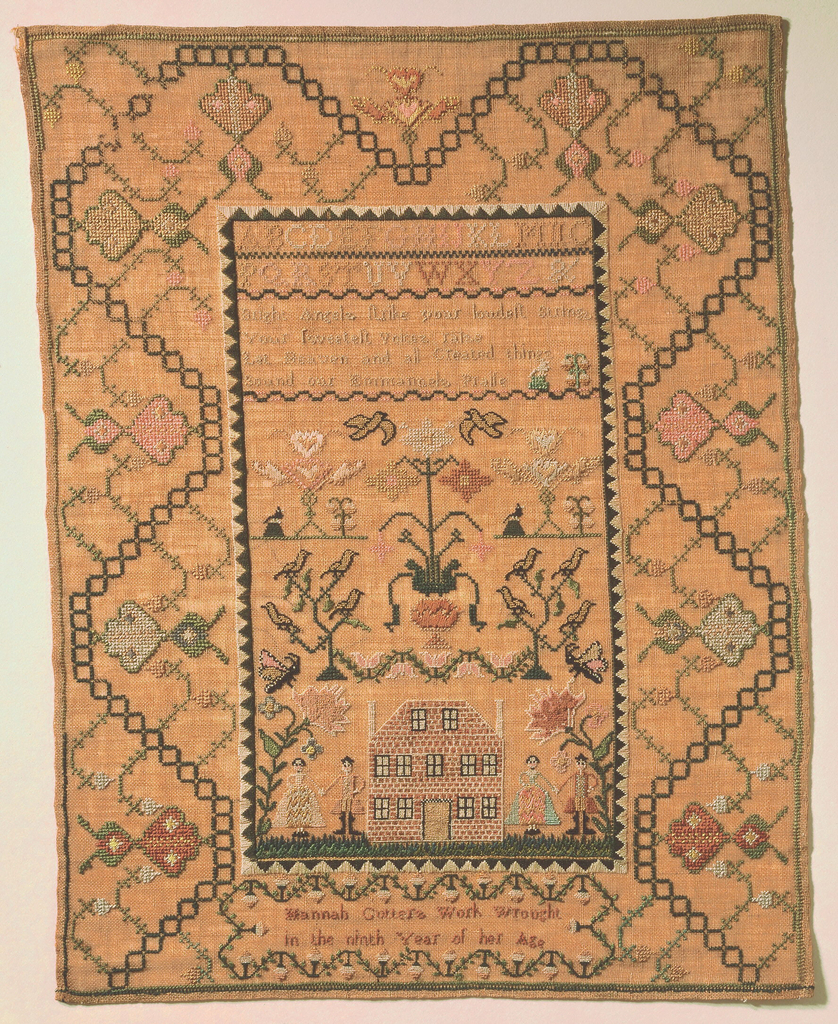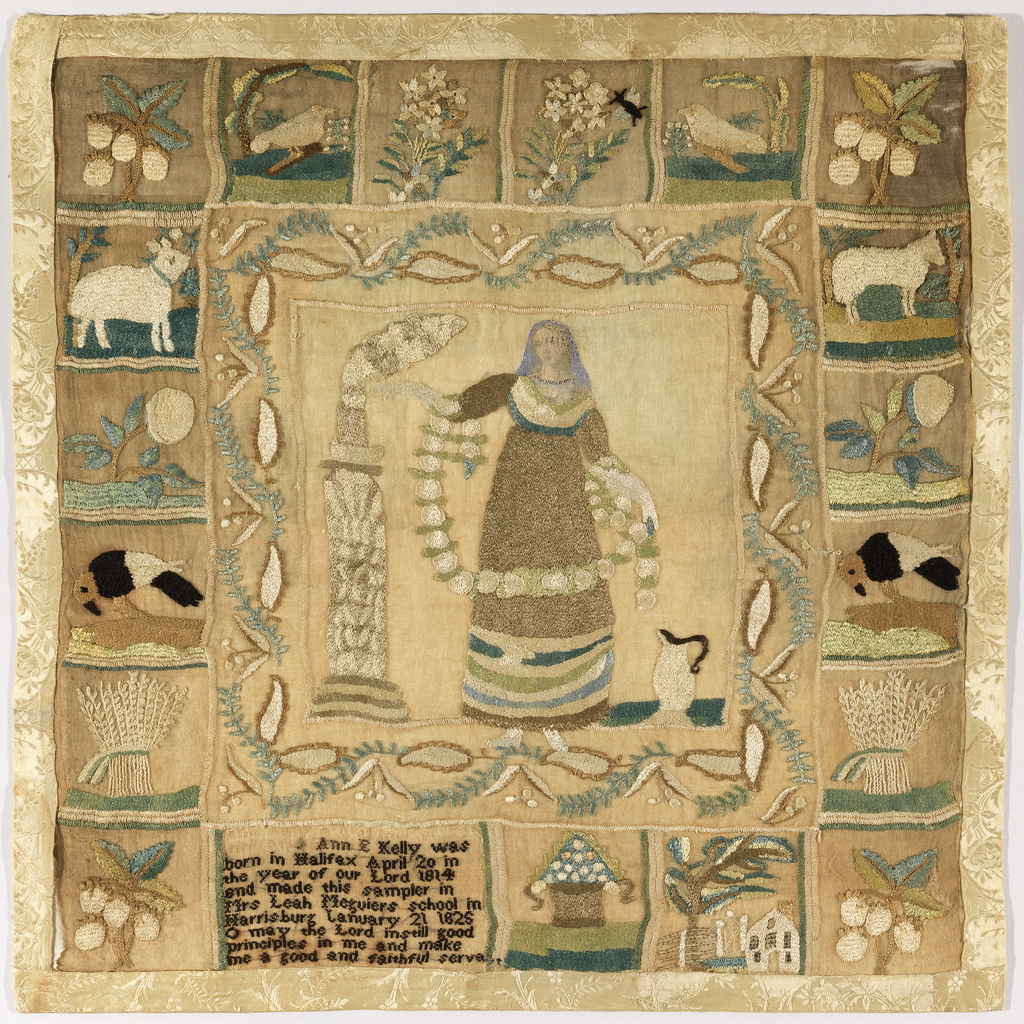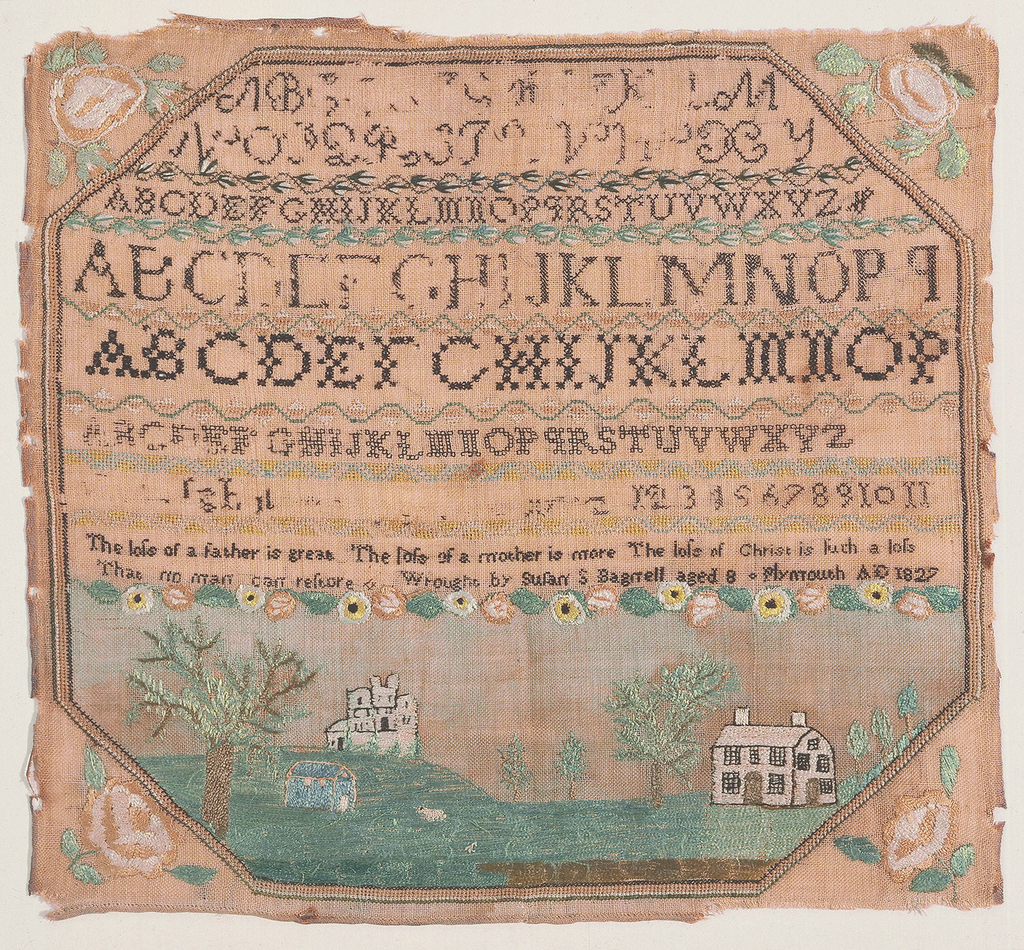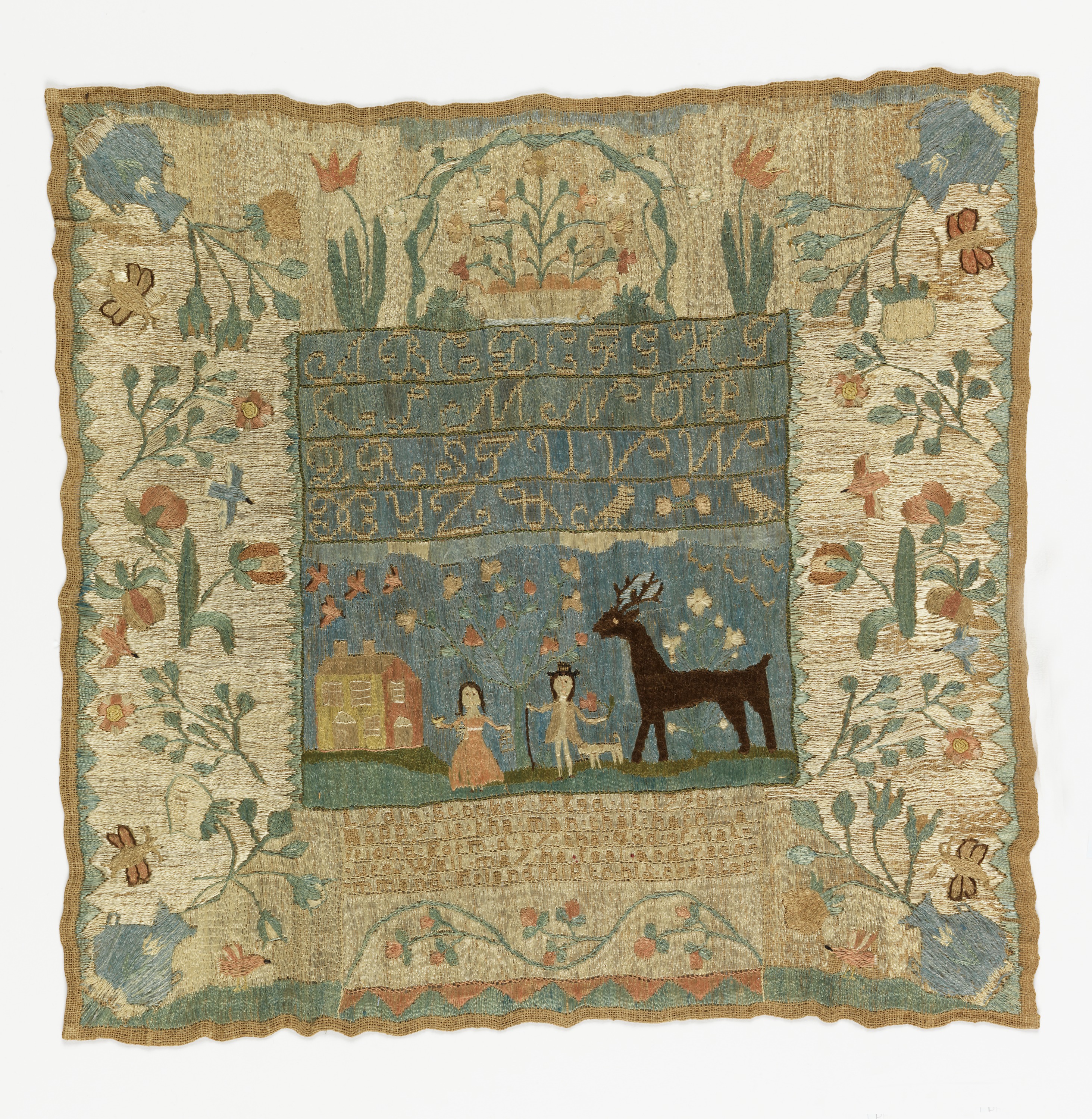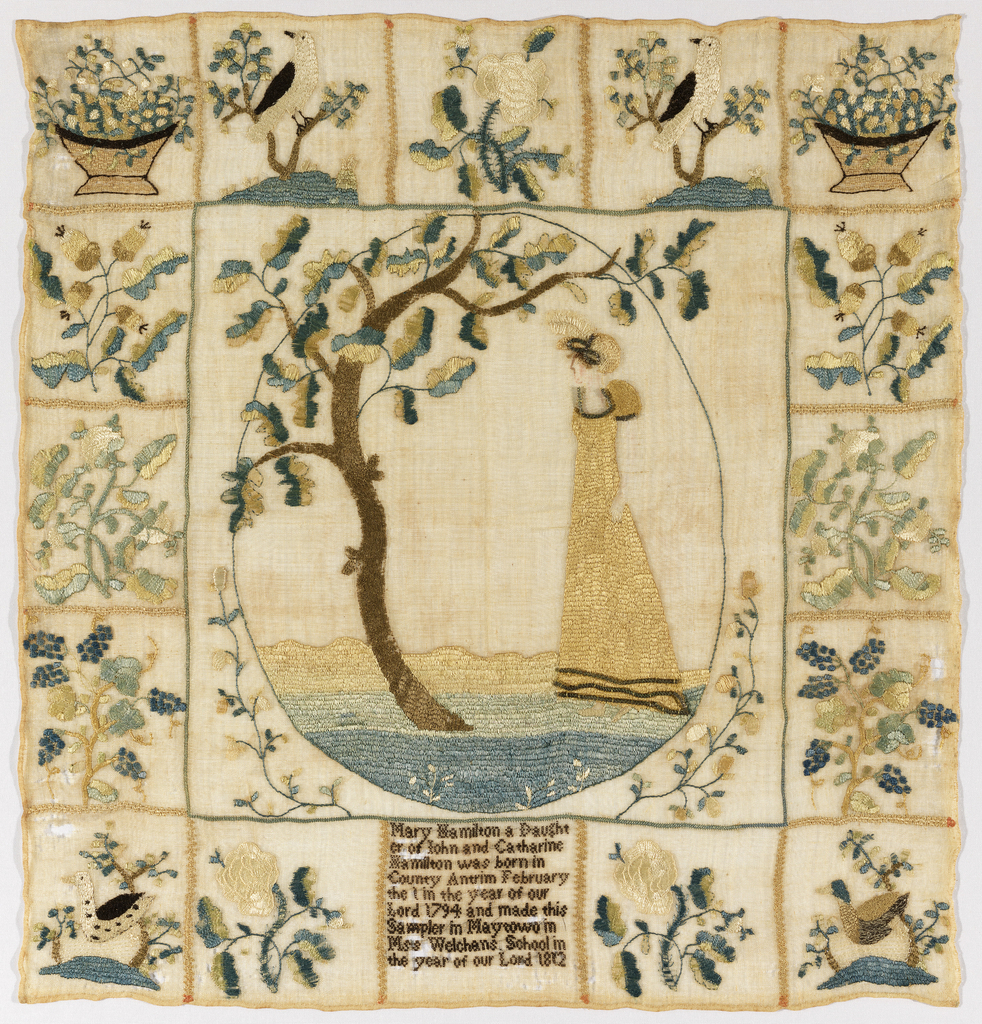On June 19, 1865, Union troops arrived in Galveston Bay, Texas, with the news that the more than 250,000 enslaved black people in the state were free by executive decree. This day came to be known as “Juneteenth” by the newly freed people in Texas. In recognition of Juneteenth, we are sharing this post originally...
The unstructured nature of this family register sampler, initialed “SS” and attributed to Sally Sacket (b. 1786), is typical of eighteenth-century examples. In contrast to the more organized genealogy samplers that appear after 1800, the text here is run together in continuous lines. Sally’s sampler is one of a group of three Westfield, Massachusetts, examples...
This sampler was worked by nine-year-old Elizabeth Starr Fowler (1822–1904) shortly after the death of her mother. It is unusual in that it combines elements of a traditional alphabet sampler with those of a mourning piece. At the top of the sampler are several rows of alphabets followed by a verse. The bottom section includes...
Elizabeth Ann Harpin Andrew was born on September 26, 1749, and stitched this sampler at the age of six. She ornamented her work with highly stylized floral motifs, framed with four-leaf clovers in a chain-link border. Elizabeth recorded the sampler’s completion date as October 17, 1755, and carefully calculated her age on that date as...
Hannah Cutter’s sampler is part of a large group of related examples worked from about 1790 until at least 1805 in Boston or nearby towns in Middlesex County. Typical characteristics of these samplers are deeply arcaded borders surrounding a central panel comprising an alphabet, verse, and pictorial elements framed by a saw-tooth border. The pictorial...
This sampler was worked in 1828 [or 1825] by Ann E. Kelly at the Harrisburg, Pennsylvania, school of Leah Maguire. The central scene is either biblical or classical, and was undoubtedly inspired by a yet to be identified print source. It depicts a woman holding a long garland of flowers who appears to making a...
Susan Sampson Bagnell’s sampler is part a group of Plymouth, Massachusetts, samplers dating from 1816 to 1845. The earliest examples had a rounded central field, which by the 1820s had evolved into the cross-stitched octagonal enclosure seen on Susan’s sampler. Although there were few Quakers living in Plymouth, the group’s bold Roman alphabets, and the...
Lydia Stocker was the daughter of Mehitable Norwood (1756-1793) and Joseph Stocker (1745-1795), a Revolutionary War captain. She was born in 1785 in Lynn, Massachusetts, and had at least two siblings, John (1783-1815) and Zachus Norwood (1787-1849). Lydia’s parents had both died by the time she stitched this sampler in 1798, at the age of...
This sampler was worked in 1812 by Mary Hamilton at the Maytown, Pennsylvania, school of Catherine Welshans (who became Catherine Welshans Buchanan after her 1813 marriage). The central scene depicts a woman, fashionably attired in a feathered headdress, standing beneath a tree. The border is made up of compartmentalized motifs, including baskets of flowers, flowering...
